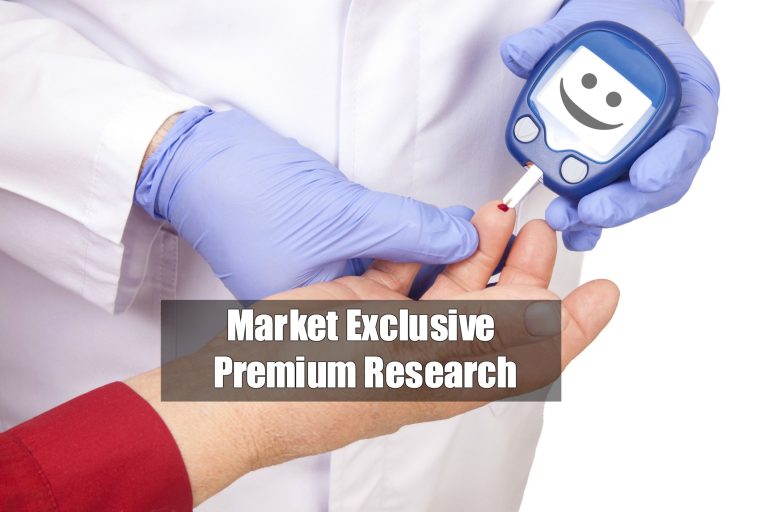
This research report covers the following drugs:
At the turn of the millennium, the population of the United States clocked in at 282.2 million. By 2030, the US population is expected to be about 362 million, for a growth rate of 28%. The scary part is that according to the World Health Organization (WHO), the US is expected to see explosive growth of 102% in type II diabetes from 2000 to 2030. If the growth rate in diabetes is more than triple the population growth, then that means there is something fundamentally wrong here. The US is by no means alone in this, as the incidence and prevalence of diabetes is expected to outpace population growth almost everywhere.
The point of this report is not to speculate as to the cause of the diabetes pandemic, but beginning with certain basic assumptions can help us as investors wrap our heads around what’s going on here and the chances of the problem being mitigated.
Humans no longer eat the same foods our ancestors did 10,000 years ago. Our sugar intake has skyrocketed, especially over the last century. Whether it’s straight up candy, soda, carbohydrate-rich bagged snacks or a plate of spaghetti, the pancreas must always keep producing the insulin to store away these sugars and keep blood glucose levels steady. The amount of insulin that the human pancreas must produce in order to maintain blood sugar homeostasis is much higher than it ever was in the past, even the recent past going back less than two centuries. In 1822, the average American consumed 45 grams of sugar every 5 days, the equivalent of 1 can of soda. By 2012 less than 200 years later, we consume 765 grams of sugar every 5 days, or 17 cans of soda.
Insulin is the molecule produced by beta cells in the pancreas that is designed to lock up sugar molecules from the blood and store them in the liver for later use. Type II diabetes mellitus results from either the body’s resistance to insulin produced, or the complete “burning out” of the pancreatic beta cells meant to produce the insulin in the first place. The fact that pancreases are becoming overburdened and burning out en masse should come as no surprise given the increased sugar workload over the last 200 years.
The point is, the diabetes epidemic is not likely to be successfully controlled without drugs unless people start cutting sugar intake drastically to 1822 levels, which were 94% lower than they are now. This is, to say the least, extremely unlikely.
Diabetes is here to stay and the problem is likely to get worse. In this report, we will break down the top 4 type II diabetes drugs in the world by annual revenue. Diabetes drugs represent 4 different basic approaches. The first is complete insulin replacement therapy by injection. The second is glucagon-like peptide-1 agonists (GLP-1). GLP-1, when stimulated, signals the pancreas to produce insulin. In diabetics, this mechanism is defective even though the pancreas is still capable of producing insulin when stimulated by GLP-1. The third is dipeptidyl peptidase 4 (DPP-4) inhibitors. While GLP-1 agonists stimulate GLP-1 directly, DPP-4 is an enzyme that breaks down GLP-1. Inhibiting that enzyme increases native GLP-1, which then goes on to signal the pancreas to produce insulin. A fourth major approach is sodium-glucose transport protein 2 (SGLT-2) inhibitors. SGLT-2 inhibitors are not among the top 8 best sellers, but for the purposes of being thorough, SGLT-2 aids the reabsorption of glucose into the blood via the kidneys. Blocking this protein keeps excess glucose in the urine to be excreted.
Insulin therapy alone accounts for about 55% of the global diabetes treatment market. Within that market, there are five main types of insulin, each with its own advantages and disadvantages. There is fast-acting, which begins to work within 5 to 15 minutes and can control glucose levels for 3 to 4 hours. What makes it fast-acting is that the insulin molecules do not bind together into groups of six molecules called hexamers, and are therefore immediately active. Then there is short-acting, regular insulin that works within 30 minutes for up to 8 hours. Intermediate-acting begins working after 1 hour for 16 to 24 hours. Long-acting insulin like Lantus from Sanofi SA (ADR) (NYSE:SNY) works within 1 hour and lasts for 24 hours. Finally, ultra-long acting insulin like Tresiba from Novo Nordisk A/S (ADR) (NYSE:NVO) lasts for more than 24 hours. The difference between these insulin forms are usually due to a slightly different amino acid orders, or else an extra molecular chain added that links the molecules together, preventing them from dissolving into their active form too quickly.
The world’s four bestselling diabetes products are Sanofi’s Lantus, Januvia from Merck and Co. Inc. (NYSE:MRK), NovoRapid/NovoMix from Novo Nordisk A/S (NYSE:NVO), and Humalog/Humulin from Eli Lilly and Co. (NYSE:LLY). What follows is a review of these four and a fifth candidate in development form Oramed Pharmaceuticals Inc. (NASDAQ:ORMP) that has a shot at disrupting these markets.
Lantus
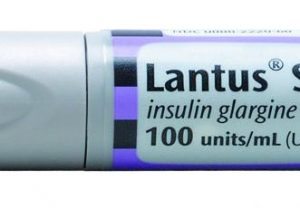
Sanofi’s patent on Lantus expired in 2015. Normally, a patent expiry on a biologic like Lantus would not be such a threat because biologics, since they derive from living cells, cannot be simply copied into a generic form. The molecules are too complicated. A competitor must figure out a way to manufacture a similar biologic, and this is quite a feat. Until March of this year, there were zero biosimilar products on the market at all for any disease. They are just now starting to appear.
Eli Lilly and Co. (NYSE:LLY) for example markets its own insulin called Humalog, whose patent expired in 2013 but sales have kept growing in spite of this. Sanofi has not had such luck because Lantus’s patent expired at the same time that Eli Lilly figured out how to manufacture something similar. While Eli Lilly’s insulin glargine called Basaglar is not technically a biosimilar by FDA standards, it still shows that biotechnology companies are finally figuring out how to compete with popular biologics, and Sanofi does see this as a threat, though it is unclear how much of a threat it is. We won’t know until several years out as we see Basaglar sales compared to Lantus sales going forward.
2015 sales of Lantus® were down 10.8% at constant exchange rates. In the U.S., sales decreased 20.5% to €4,023 million because of higher discounts, though growth is still coming from China. A new combination therapy called iLixiLan was just recently approved by the FDA, which combines a GLP-1 component with insulin glargine. This may help slow the sales decline for Lantus but will not stop it. Biosimilars could also continue hacking away at Lantus sales. The only question is how quickly.
It is important to review the data on which drugs like Lantus were approved in order to get a better idea of how new diabetes drugs can successfully get to market. Lantus was trialed for both type 1 and type 2 diabetes. Here we’ll go into its type 2 trials.
Lantus was approved for type 2 based on four separate trials. The first enrolled 570 subjects for 52 weeks. Lantus injected once a day was found to be as effective as shorter acting NPH insulin. The change in HbA1C, the gold standard measurement for average blood glucose levels over 8 to 12 weeks, changed by 0.46 from baseline vs NPH at 0.38. HbA1c measures how much hemoglobin has had glucose attached to it, and since blood cells live for 8 to 12 weeks, a measurement of HbA1c shows average blood sugar levels over this timeframe.
The second study enrolled 518 patients testing Lantus at bedtime vs NPH insulin once or twice a day for 28 weeks. HbA1c change from baseline for Lantus was 0.41 vs NPH of 0.59. The third study enrolled 697 patients who failed oral antidiabetic therapies. Lantus was given once a day either before breakfast or at bedtime and was again shown to be as effective at lowering HbA1c levels as NPH insulin.
These are the kinds of numbers that most insulin products need to emulate in order to reach approval. Several Phase III trials each with more than 500 patients, demonstrating lower HbA1c for a sustained period of time and a good safety profile.
Over the course of its history since 2000, Lantus has sold about $54B globally, and though those numbers will keep growing, we are already past Peak Lantus, and Sanofi is going to have to find a new flagship to sustain growth.
Januvia
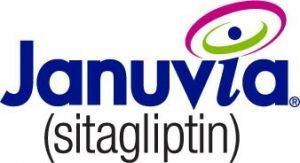
Januvia is Merck’s #1 bestseller with a patent until 2022, so no immediate danger for Merck here.
Sitagliptin was approved after showing that it could lower HbA1c level by 0.7% versus placebo. It is a second-line drug usually resorted to before insulin itself, but after metformin, and sometimes taken together with metformin in a combination branded Janumet.
The data behind its approval were as follows. Two monotherapy trials were conducted, one for 18 weeks and another for 24. The first had 521 patients in placebo and Januvia arms. The second tested 741 with the same arms. There were significant improvements in HbA1C in both trials for the Januvia arms vs. placebo, but no difference between a higher and lower dose.
Two combination therapy trials followed, one with 701 patients, and one with 353, so altogether we’re talking about 2,316 patients. In both trials, HbA1C improved for the combination metformin plus Januvia therapy over metformin alone. The second trial tested combination therapy with a different oral antidiabetics with similar results.
Merck has been sued by patients in the past for issues of pancreatitis and pancreatic cancer, which is not surprising given that the DPP-4 class manipulates pancreatic function. These issues have been minor enough for them not to derail the drug though.
In a sign of competition and pricing pressures in the diabetes market, Januvia sales have been plateauing since 2012. Januvia proper has been shrinking, but sales of the combination Janumet have more than compensated for that fall. The numbers show that despite a commanding lead in the DPP-4 market at 65% global market share, Januvia sales are near their peak and probably won’t climb too much higher until patent expiry.
Merck is another company whose #1 best seller will be under significant pressure in the medium term, and will be looking for a replacement for that bestseller in the next few years.
Humalog and Humulin
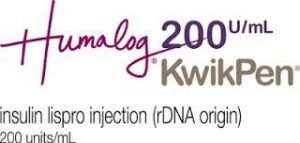
Both Humalog and Humulin together sold over $4.15 billion in 2015. As far back as the SEC has online data, in 1991, Eli Lilly’s diabetic care segment logged $583.5 million in sales. That’s growth of over 7x in 25 years, despite patent expiries in the way.
What these numbers show is that the big bestselling diabetes drugs are not likely to quickly fade, though they are leveling off. More likely they will reach a peak (or have already done so) and then will slowly fade from there. Biosimilars will eat into some of the revenues, but not too heavily.
Both Humalog and Humulin are fast-acting insulins. Humulin is human insulin derived from recombinant DNA methods, basically the expression of human genes through a bacterial vector. Humalog is slightly tweaked human insulin, slightly changing the order of key amino acid sequences to prevent the molecule from clumping into hexamers. This keeps the insulin biologically active and is more suitable for people who do not want to wait long between injection and eating. Humalog closely mimics the body’s fast insulin response, so it may feel more normal to some patients than longer acting formulations like insulin glargine.
The approval for Humalog back in 1996 was also based on several Phase III trials totalling over 3,000 patients over 3 years. The reason that insulin trials are so protracted is that insulin is structurally similar to hormonal growth factors, and when tweaked it could affect cells in ways that are not good, such as causing too much growth as in cancer. Every time insulin is slightly changed to make a different formulation of it, large trials over long periods of time are generally required to make sure it does not cause cancer.
What both Humulin and Humalog show about the insulin market is that while there is competition between different kinds of insulin, it is only to a point. Once one form of insulin stakes out its market, it generally keeps it as patients get used to their brand and maintain it for maintenance of a consistent lifestyle. The new question is what effect will biosimilars have? Since biosimilars are not exactly the same as the drugs they copy, and since the characteristics of any particular insulin can change due to any small change, the biosimilar revolution will probably only succeed in introducing new kinds of insulin to the market that will stake out their own markets. Again, it may eat into some of the revenues of the drugs being copied, but patients are unlikely to adopt a biosimilar over their previous drugs in large numbers because changing the type of insulin you use is a big deal for diabetics. It is not a decision taken lightly like switching to identical generics over branded versions.
NovoRapid and NovoMix

NovoRapid is the brand name for insulin aspart, and NovoMix is a combination of both fast acting and intermediate acting insulin aspart. NovoRapid is marketed as a fast-acting insulin analog meaning it has been altered by way of a change in its DNA sequence with the goal of changing the way it interacts with the body. Specifically, in the instance of NovoRapid, an amino acid called proline is removed and replaced with aspartic acid. When insulin stores inactively, six separate insulin molecules join together to form a hexamer as stated earlier. Hexamers are stable, and are the standard, natural way our bodies store insulin for future use.
In NovoRapid, proline plays a key role in the formation of hexamers, and so by removing it and replacing it with aspartic acid, the insulin molecules in insulin aspart are unable to form hexamers. This stops them from becoming dormant, and in turn, doesn’t allow for storage. Because the body cannot store the NovoRapid associated insulin molecules, they become active immediately, and herein lay the fast-acting nature of the treatment.
NovoMix is also a formulation of insulin aspart, however it differs in that it is a combination formulation. One part is the same insulin aspart found in NovoRapid. The other part is an intermediate-acting insulin because it is crystallized and takes time to dissolve in the blood. It takes a little longer for the insulin molecules to become active, and so the second part serves as a sort of longer tail supporting insulin dose. Together, the combination of fast and intermediate-acting insulin aspart serves to provide an immediate release, and a longer lasting release insulin treatment.
Just as with NovoRapid, NovoMix is a subcutaneous injection administration, designed for daily use flexible throughout the day, according to dietary habits.
Sales of NovoMix increased 13% from 2014 to 2015. NovoRapid sales are still growing rapidly, 19% from 2014 to 2015. Novo’s patent expires in one year, but like Eli Lilly, it is unlikely to be heavily affected.
NovoRapid was approved on the basis of a six-month open label study of 884 patients that showed HbA1c levels significantly lower in the aspart group than in the human insulin group. The side effect and safety profiles were similar between the two. The importance of this data is that it is not absolutely necessary to conduct placebo-controlled 3-year trials of thousands of patients. Smaller, quicker trials can still get through in some cases.
Oramed and ORMD-0801
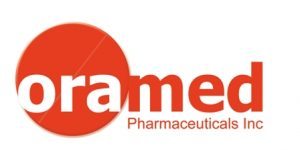
One company recently completed Phase IIb trials for an oral insulin pill, something that has been attempted since the 1920’s but no one has ever succeeded in creating. Insulin normally cannot get past the digestive system, and even if it did, it is difficult for the small intestine to absorb it due to the shape of the molecule and the way nutrients are absorbed in the intestinal tract.
Oramed Pharmaceuticals may have just made the first step towards realizing this goal with ORMD-0801, which shows preliminary evidence of being able to get past the digestive system and be absorbed through the intestine via the portal vein directly to the liver.
Oramed’s insulin pill combines active insulin with enteric coating that prevents digestion from stomach acid. It also contains protease inhibitors that prevent digestion of the insulin in the intestinal tract, and absorption enhancers that guide the insulin molecules through the small intestine to the portal vein and then to the liver.
There is nothing unique about enteric coating, as it is a common technology to prevent drugs from being digested too quickly. There is also nothing unique about protease inhibitors. The company is mum on the nature of its absorption enhancers though for proprietary reasons, and it is the combination of these three factors that makes the approach unique.
Oramed just recently released Phase IIb data on 180 type II diabetics. The trial did not contain the traditional HbA1C endpoint that measures average glucose levels over a period of 8 to 12 weeks, but did show that, in principle, insulin can be taken orally and absorbed through the intestine. This is the very first time any company has proven that it can in theory be done. The endpoint of this trial was mean percentage change in pooled nighttime glucose, and there was a statistically significant decrease between the active arm and placebo of 6.47%.
What this means therapeutically is the question, as not even the company itself is sure how these results will translate to therapeutic outcomes. The only thing it does show is that some of the insulin did get through, though we don’t know how much because it never reached the blood so it cannot be tested that way. Any pivotal trial though will probably require an HbA1C endpoint like other insulin therapies.
The other question is why does oral insulin pose a bigger threat to established markets than another form of injectable insulin? For two reasons. First, an oral capsule is just easier to take and increases compliance. Injecting yourself with insulin is painful both physically and it is something that is hard mentally for many patients to accept. For this reason it is often postponed until symptoms of the disease worsen. Second, the reason that the insulin market is so bifurcated into long-acting, short-acting, intermediate-acting and mixes between them is that there are different matches for different patients depending on what their bodies work best with and what makes them feel normal.
Insulin injections store sugar in fat and muscle, but this is not how the body naturally uses insulin. In healthy non-diabetics, insulin is absorbed through the portal vein and sent directly to the liver where it is used to store sugar into long glycogen chains. Since the liver self-regulates this process, there is no need for different kinds of insulin in healthy people who are not diabetics. Basically, oral insulin has the potential to obviate the need for different forms of insulin, and streamline the whole market. That is, if it works therapeutically, which the Phase IIb has not yet proven.
Another potential advantage is in terms of clinical testing. As we saw with Novo’s relatively quick trial that led to the approval of NovoRapid, oral insulin may be able to shorten its Phase III trial time compared to other insulin trials. As stated earlier, the reason that new insulin trials are generally so long and trial thousands of patients is that modified insulin has the potential to cause cancer, insulin being close to a hormonal growth factor. The insulin in Oramed’s capsule is not modified because it doesn’t need to be, since it goes straight to the liver where it is automatically regulated rather than in the blood where it must have artificially controlled release. This could mean that Phase III trials have the potential to be shorter with less patients over a smaller time frame.
It is still early days, but given the nature of the diabetes market in general and the insulin market in particular, oral insulin has the potential to change the nature of the entire diabetes market, and could threaten some of the biggest pharma companies in the world. It could get patients started on insulin therapy much earlier before diabetes symptoms become too acute, and unlike biosimilars, could threaten any form of injectable insulin available today.
So far, it seems that the big players including Lantus, Novo Nordisk, Eli Lilly and Merck have not taken serious notice. But if and when we start hearing about negotiations with Big Pharma, investors will know that ORMD-0801 is being taken seriously. The next step will be a Phase III, possibly beginning sometime in early 2017, though we have no indication from the company of an exact timeframe. At this point the company is risky, but it is certainly a top Phase III trial to watch in 2017, with enormous implications for one of the biggest disease markets in the world.




